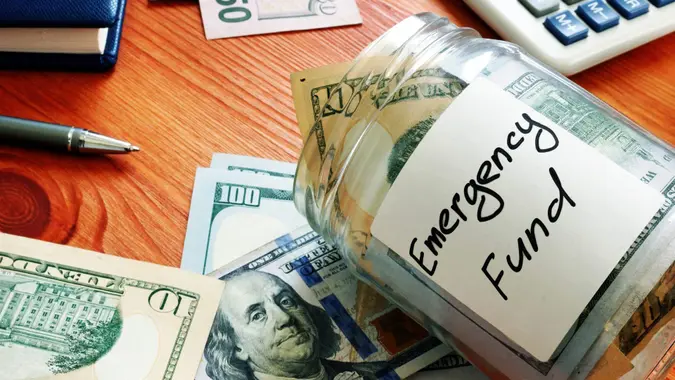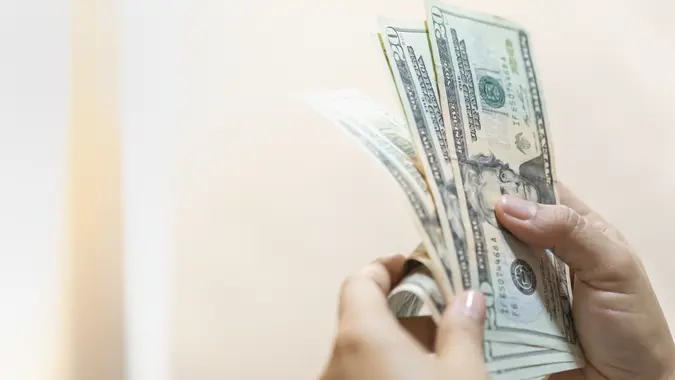Here’s How Much Americans’ Emergency Funds Are Shrinking

Commitment to Our Readers
GOBankingRates' editorial team is committed to bringing you unbiased reviews and information. We use data-driven methodologies to evaluate financial products and services - our reviews and ratings are not influenced by advertisers. You can read more about our editorial guidelines and our products and services review methodology.

20 Years
Helping You Live Richer

Reviewed
by Experts

Trusted by
Millions of Readers
Almost anything can throw your budget into chaos. It could be a surprise medical bill or even a flat tire. The problem is that you may not have enough funds on hand to cover it.
In fact, many Americans are in a similar situation. Their emergency funds are shrinking, leaving them with less of a financial cushion when the unexpected happens.
Here’s how much emergency funds are shrinking, as well as what Americans can do about it.
How Much Are Emergency Funds Shrinking?
The median U.S. emergency fund has gone down a significant percentage, according to Empower.
Specifically, emergency funds have fallen to $500 in 2025, $100 less than the previous year, per Empower. What’s more, 32% said they don’t have an emergency fund, and if there were an emergency over $400, around a third say they couldn’t afford to cover it.
CNBC reported that having a higher emergency fund could increase your happiness levels and lead to less stress. The publication found that research from Vanguard said having a minimum of $2,000 in emergency savings could make a massive impact on well-being.
How Income Can Affect Savings
Logically, the higher your income, the more opportunities you have to save. Higher-income households tend to benefit more from stable income and can manage to save, despite external pressures like inflation. Those with lower incomes might struggle.
Even so, if you’ve managed to save in the past, other factors like unemployment and higher prices overall can make it challenging. And for many, wages haven’t caught up, meaning their budgets are being squeezed more than ever.
Despite the challenges, it’s still crucial to have an emergency fund. Even one unexpected expense can push you into debt with sky-high interest rates. If you have no other option, it can make sense. However, the less you’re forced to borrow, the better.
How To Build an Emergency Fund
The promising news is that even taking small and consistent steps can help make a difference in your finances. Consider starting small to keep you motivated. Even being able to set aside $100 is still a win. When you reach that, then aim for $250 and higher amounts as you go along.
Yes, even setting aside $10 or $20 each time will add up before you know it.
To start, take a careful look at your spending over the past few months. See where you may have been spending on items you don’t use, like subscription services. Or maybe you found that you buy grocery items you already have at home. In that case, a simple review of your pantry could help you from overspending.
It may also be the case that you want to temporarily cut back on some items to prioritize saving. Getting takeout after a long day at work can be a great idea, but cooking meals yourself for several days a week could kick-start your emergency fund savings.
However you’re approaching your savings, keeping your emergency savings in a separate savings account can ensure that you’re not tempted to spend it on everyday items. Choosing a high-yield savings account could help you earn more interest compared with a traditional savings account. That way, the cash is readily available when you need it, but you’re at least earning something while the money is sitting there.
 Written by
Written by  Edited by
Edited by 
























